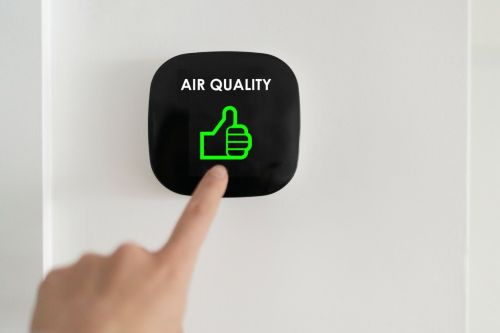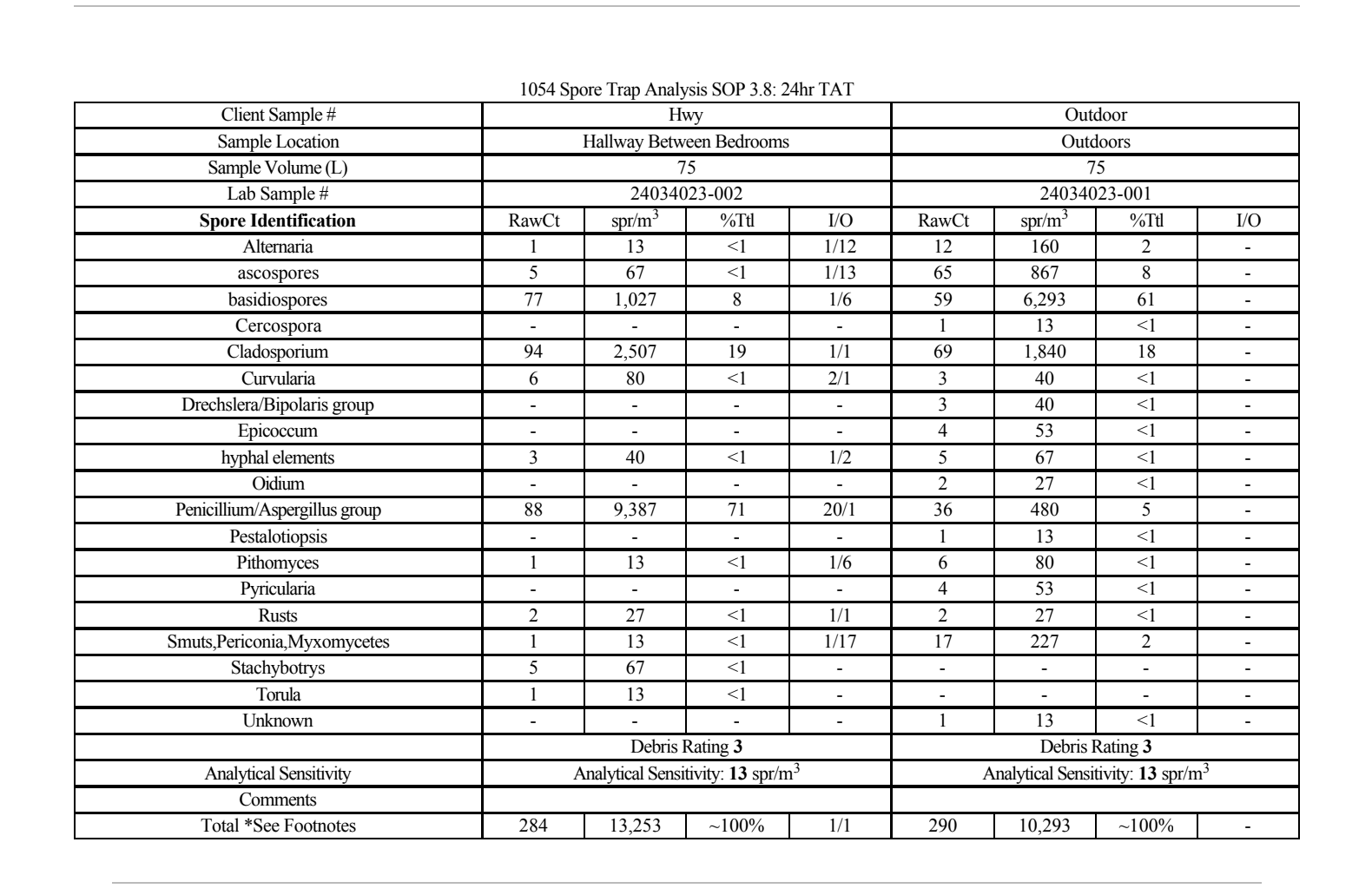
Air quality testing provides a clear picture of the mold levels in your home by measuring the number of spores per cubic meter of air. We collect an air sample and send it to a certified lab, where experts analyze the spore count and identify the types of mold present. This helps determine whether your indoor air quality is within a normal range or if elevated mold levels suggest a hidden issue that needs further investigation.
Indoor vs. Outdoor Mold: How We Determine the Source

Mold spores exist naturally in the outdoor environment, which means some level of spores will always be present indoors as well. To determine whether elevated mold levels are coming from an indoor source or simply from outdoor air, we take an outdoor air sample for comparison. By analyzing both indoor and outdoor samples, we can assess whether the indoor air quality is within a normal range or if there may be an indoor mold issue that requires further investigation.
Testing Limitation:

While an air quality test can detect the presence of mold spores, it cannot pinpoint their exact origin—for example, whether they are coming from behind a cabinet or another hidden area. However, by taking multiple air samples from different locations, such as the living room, kitchen, and bathroom, we can begin to identify patterns and potential sources of the issue, helping to narrow down where further inspection may be needed.
Test detects spores from:
- Mold Behind Drywall
- Mold in Studs
- Mold in Air Ducts
- Mold from Outdoors
- Any mold spore that may find its way into your home
Book an Appointment
Sample Test Result

This is what an air quality test report looks like.






